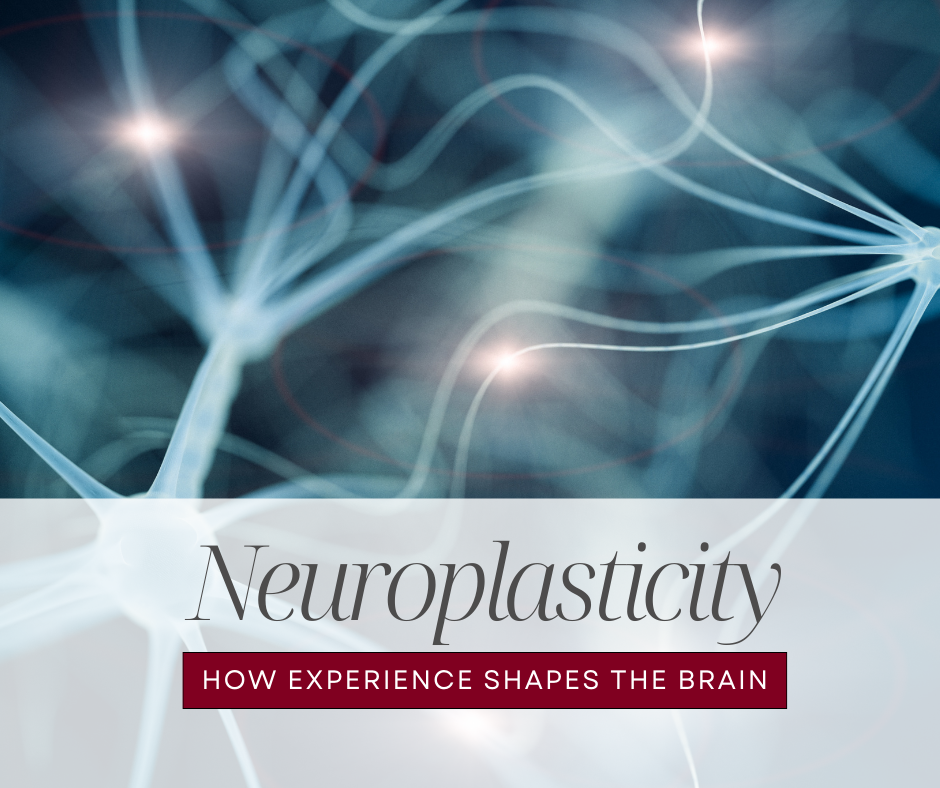Neuroplasticity: How Experience Shapes the Brain
Neuroplasticity, the brain's remarkable ability to reorganize itself in response to experience, has captivated researchers and scientists for decades. This phenomenon, often encapsulated by the phrase "where attention goes, neural firing flows, and connections grow," underscores the intricate interplay between neural activity, attentional focus, and synaptic connectivity. It shows how neural firing patterns shape the brain's structural and functional adaptations. The brain has the capacity to undergo structural and functional modifications throughout our lifespan. The mechanisms underpinning neuroplasticity is crucial for learning, memory, and skill acquisition as well for our understanding of behavior, emotions, and thought processes.
“Neurons that fire together, wire together.”
Neurons, the fundamental units of the nervous system, communicate via intricate patterns of electrical impulses known as neural firing. Synaptic connections between neurons are the conduits through which these electrical signals propagate. When neurons fire in synchrony, synaptic connections are reinforced, leading to enhanced communication between specific brain regions. This process, known as Hebbian plasticity, forms the foundation for the strengthening of neural circuits in response to repeated patterns of activity.
Attentional Focus and Neural Activation:
The phrase "where attention goes, neural firing flows" (by Dr. Dan Siegel) underscores the pivotal role of attention in driving neural activity. Directed attention to a particular sensory input, thought, or task leads to increased activation of corresponding neural circuits. Functional neuroimaging techniques, such as fMRI and EEG, have revealed that focused attention amplifies the firing rates of neurons associated with the attended stimulus. These heightened firing rates contribute to the modulation of synaptic strength and the refinement of neural pathways.
Synaptic Plasticity and Learning:
The growth of connections alluded to in the phrase underscores the concept of synaptic plasticity. Long-term potentiation (LTP) and long-term depression (LTD) are prominent forms of synaptic plasticity that underlie learning and memory processes. LTP involves the strengthening of synapses through repeated activation, while LTD results in the weakening of synapses due to reduced firing. These plasticity mechanisms enable the brain to adapt to changing environmental demands and encode new information.
Experience-Dependent Plasticity:
Neuroplasticity is a fundamental feature of neural development. During critical periods in early life, sensory experiences play a pivotal role in shaping neural circuits. Deprivation or enrichment of sensory inputs during these periods can lead to enduring changes in neural connectivity. For example, the visual cortex of kittens reorganizes based on visual experiences, highlighting the profound impact of early sensory input on neural wiring.
Experience-expectant Plasticity:
Experience-expectant plasticity is a fundamental concept in neuroscience that refers to the brain's inherent ability to adapt and reorganize its structure and function based on the experiences and stimuli it encounters during critical periods of development. This plasticity is driven by the brain's anticipation of certain sensory and environmental inputs that are expected to occur during specific developmental stages. During these sensitive periods, the brain forms and strengthens neural connections that are crucial for processing and responding to common sensory, social, and cognitive experiences.
Experience-expectant plasticity plays a vital role in shaping the early development of sensory systems, language acquisition, social skills, and other fundamental cognitive processes. It reflects the brain's evolutionary adaptation to optimize learning and adaptation to the typical environmental conditions a species is exposed to. Disruptions or lack of expected experiences during critical periods can lead to long-term effects on neural circuitry and function, potentially impacting various aspects of development and behavior.
In the context of relationships, experience-expectant plasticity underscores the significance of early interactions and experiences in shaping individuals' neural pathways related to social bonding, emotional regulation, and interpersonal skills. These neural connections established during critical developmental periods can have a lasting impact on how individuals form and navigate relationships throughout their lives.
If you’d like support as you explore how your experiences shape your thought, behavior, and emotions, click here to request a session.
I am a PhD in Clinical Sexology candidate at Modern Sex Therapy Institutes and have a Master of Science in Educational Psychology. I work with individuals, couples, non-monogamous relationships, and groups in topics related to sexuality, emotional regulation, communication dynamics, and changing behaviors.


